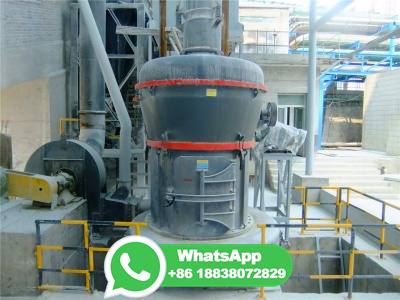
Coal is an abundant natural resource that can be used as a source of energy, as a chemical source from which numerous synthetic compounds (, dyes, oils, waxes, pharmaceuticals, and pesticides) can be derived, and in the production of coke for metallurgical processes. Coal is a major source of energy in the production of electrical power ...
WhatsApp: +86 18203695377
Formation of coal: The process of coal formation is called carbonization which is a very slow process and may take thousands of years. This process varies slightly in different areas depending on the plants and conditions that are present, but the overall process is similar. There are two main phases in coal formation: peatification and ...
WhatsApp: +86 18203695377
The Origin of Coal Geology (Sem IV) Paper MGELEC1(Fuel) Accumulated, compacted and altered plants form a sedimentary rock called coal. Coal is a brown to black naturally occurring combustible organic rock that originated by accumulation and subsequent physical and
WhatsApp: +86 18203695377
Carbonization: The slow process of conversion of wood into coal over millions of years is called carbonization. Uses of coal : Coal is widely used as a fuel for domestic and industrial applications. Thermal power stations burn coal to convert water into steam, which is then used to run generators that produce electricity.
WhatsApp: +86 18203695377
Petroleum is a liquid that occurs in rock formations naturally. This consists of a complex mixture, plus other organic compounds, of various hydrocarbon molecular weights. Petrochemicals are primarily manufacturing at a few production sites across the globe. Oil is the raw material for many industries as well. Petroleum is retrieving largely by ...
WhatsApp: +86 18203695377
Coal made primarily from lower plants raw material as well as plankton is called sapropelic coal. Coal formed from a combination of higher and lower plants is called humicsapropelic coal or sapropelichumic coal depending on the proportion of these two plants. The coal forming process can be divided into five stages as shown in Fig.
WhatsApp: +86 18203695377
Instead of releasing carbon and oxygen into the air, it created perfect conditions for coal formation from these fallen trees. This is because all the carbon remains in the wood to become the prime ingredient in hydrocarbons. So, for 60 million years, this natural process of laying down vast swamp forests under sediment continued.
WhatsApp: +86 18203695377
With more heat, time, and pressure, the kerogen underwent a process called catagenesis, and transformed into hydrocarbons. Hydrocarbons are simply chemicals made up of hydrogen and carbon. Different combinations of heat and pressure can create different forms of hydrocarbons. Some other examples are coal, peat, and natural gas.
WhatsApp: +86 18203695377
Coal forms when swamp plants are buried, compacted and heated to become sedimentary rock in a process called coalification. "Very basically, coal is fossilized plants," James Hower, a...
WhatsApp: +86 18203695377
The process of coal formation is called carbonisation. The dead plants and vegetation due to temperature and high pressure over hundreds of years slowly turned into coal. This slow conversion of dead plants and forests into coal is called the process of carbonisation. The process is called so because coal largely contains carbon.
WhatsApp: +86 18203695377
Description: Coalification is a geological process of formation of materials with increasing content of the element carbon from organic materials that occurs in a first, biological stage into peats, followed by a gradual transformation into coal by action of moderate temperature (about 500 K) and high pressure in a geochemical stage. Notes:
WhatsApp: +86 18203695377
The formation of coal occurs over millions of years via a process known as carbonation. 8. Which substance is formed by the carbonisation of dead vegetation?. (a) coal (b) coke (c) coal gas (d) coal tar. Soln: Answer is (a) coal. Explanation: The formation of coal occurs over millions of years via a process known as carbonation.
WhatsApp: +86 18203695377
Study with Quizlet and memorize flashcards containing terms like Read the paragraph, and then answer the question. Coal is a black, hard substance formed from the remains of living things that existed a long time ago. The remains were buried and exposed to pressure and temperature underneath Earth's surface. Over time, these remains solidified. Which of the spheres interact in the formation of ...
WhatsApp: +86 18203695377
All coals, regardless of whether they are caking or coking coals, leave a solid carbonaceous residue at the end of the carbonization process. Chars, if heattreated to extreme temperatures, ≥2500 °C, do not form graphite, while cokes do. That is, chars are nongraphitizable, while cokes are graphitizable [A]. Type.
WhatsApp: +86 18203695377
The uses of fractional distillation are that it enables component separation into different phases and purification of organic compounds. In coal and petroleum class 8 notes, the classification of natural resources, the formation of petroleum and coal and the refining of petroleum along with class 8 Science chapter 5 MCQs are discussed.
WhatsApp: +86 18203695377
The formation of clastic and organic rocks begins with the weathering, or breaking down, of the exposed rock into small fragments. Through the process of erosion, these fragments are removed from their source and transported by wind, water, ice, or biological activity to a ... Sedimentary rocks like bituminous coal, limestone, and sandstone, ...
WhatsApp: +86 18203695377
The most favorable conditions for the formation of coal occurred 360 million to 290 million years ago, during the Carboniferous ("coalbearing") Period. However, lesser amounts continued to form in some parts of the Earth during all subsequent periods, in particular the Permian (290 million to 250 million years ago), and throughout the ...
WhatsApp: +86 18203695377
This behavior is contrary to what is associated with coal formation. In the case of terrestrial burial, the organic sediment is dominated by cellulose and lignin and the fraction of minerals is much smaller. ... ones) and the heavier ones fall towards the bottom. Because this process occurs at atmospheric pressure, it may be called atmospheric ...
WhatsApp: +86 18203695377
The definition of compaction is the decrease in the volume of a fixed mass of sediment. Compaction in geology is when sand, dirt, clay, and/or small rocks are pressed together over time so that ...
WhatsApp: +86 18203695377
The FischerTropsch process (FT) is a collection of chemical reactions that converts a mixture of carbon monoxide and hydrogen, known as syngas, into liquid reactions occur in the presence of metal catalysts, typically at temperatures of 150300 °C (302572 °F) and pressures of one to several tens of FischerTropsch process is an important reaction ...
WhatsApp: +86 18203695377
The process that microbes use to create a methane precursor molecule from coal. Anaerobic microbes live in the pore spaces between coal. They produce enzymes that they excrete into the pore space ...
WhatsApp: +86 18203695377
temperature due to the layers of soil, dead plants got slowly converted to coal. This process of formation of coal from dead vegetation is called carbonization. 4. Fill in the banks. (a) Fossil fuels are _____, _____ and _____. (b) Process of separation of different constituents from petroleum is called ...
WhatsApp: +86 18203695377
The formation of kerogen is a key component of the fossil fuel development process. Following a lengthy process of years of compacting carbonaceous matter (plants, animals, and other organisms that contain carbon), the complex and waxy mixture of hydrocarbon compound known as kerogen began to form. Kerogen is a naturally occurring insoluble ...
WhatsApp: +86 18203695377
Solution. Verified by Toppr. Coal is formed when dead plant matter decays into peat and is converted into coal by the heat and pressure of deep burial over millions of years. Some iron and steel making and other industrial processes burn coal. The extraction and use of coal cause many premature deaths and many illnesses.
WhatsApp: +86 18203695377
Geology Coal is composed of macerals, minerals and water. [18] Fossils and amber may be found [where?][by whom?] in coal. Formation Example chemical structure of coal The conversion of dead vegetation into coal is called coalification. At various times in the geologic past, the Earth had dense forests [19] in lowlying wetland areas.
WhatsApp: +86 18203695377
Coal is formed from the remains of plants, by a process called coalification. The whole process starts with the remains of dead plants, which must be buried in an oxygenpoor or oxygenfree environment, to avoid complete decomposition. Usually, these are swamptype environments. The coalification process takes place over millions of years.
WhatsApp: +86 18203695377